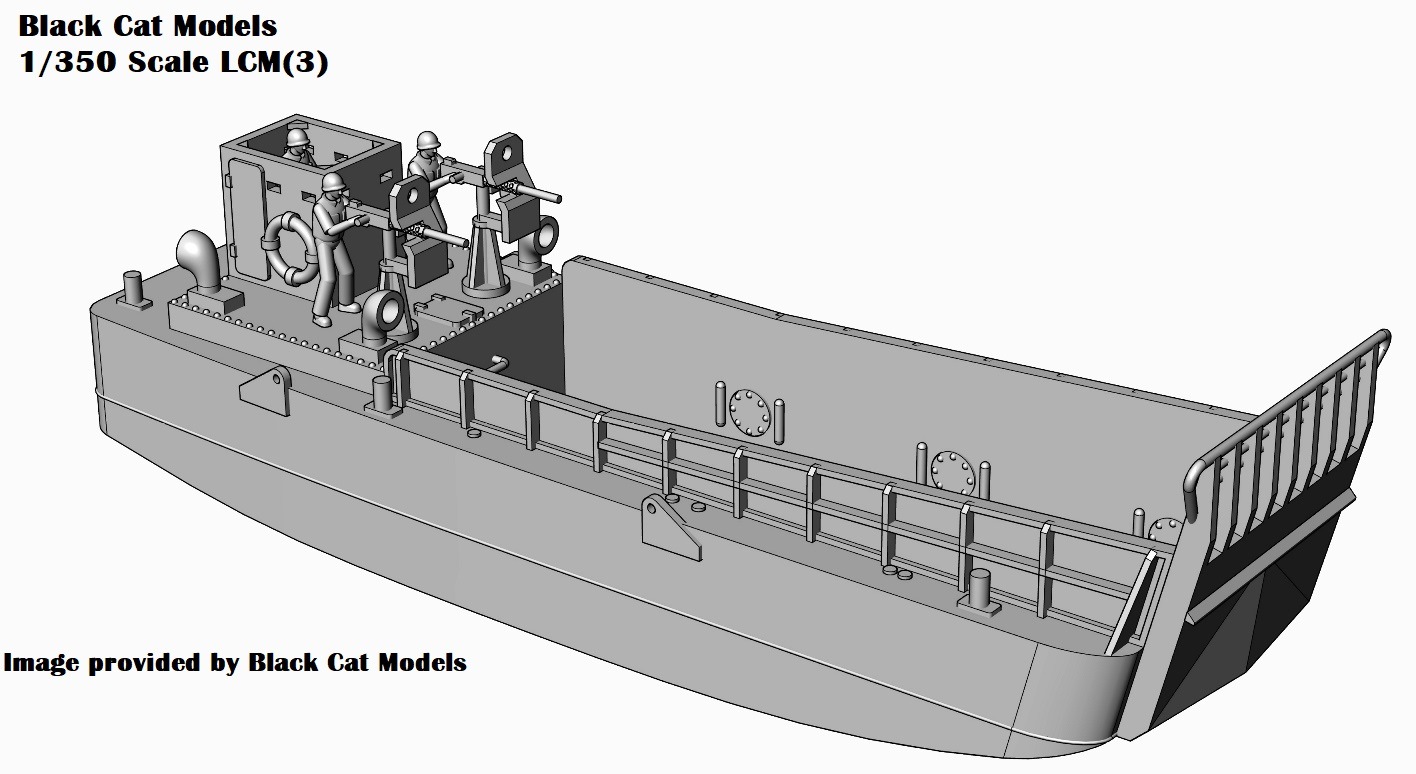|
|
|||||||
|
September 2024 |
|||||||
| HISTORY | |||||||
| The need for a landing craft capable of putting ashore an armored vehicle or tank became apparent in the years leading up to World War II. The LCVP could transport only small vehicles and at most a 1.5-ton truck. In 1941, the Bureau of Ships made a request to Higgins Industries, the company that designed and built the successful LCVP, to develop a 45-foot tank landing craft. However, the size of tank to be carried soon increased with the M4 Sherman becoming the standard medium tank and a larger 50-foot design was required. This became the Landing Craft, Mechanized or LCM(3). The LCM(3) could carry 60 troops or 60,000 tons of cargo instead of a tank if needed. The LCM(3) had a beam of 14 feet 1 inch with 31-foot cargo well. They were armed with two .50-cal M2 Browning machine guns and had a crew of four. The LCM(3) was first used in the invasion of North Africa. The LCM(3) was eventually eclipsed by the 56-foot long LCM(6). | |||||||
| Black Cat Models LCM(3) | |||||||
| The Black Cat Models LCM(3) is a fully 3D model. The contents come in a clear plastic clamshell box with the print rafts affixed to double-sided tape. | |||||||
|
|
|||||||
|
The 3D printed hull is very
nicely done and sits on a printing raft along with the ramp door. During
shipping, both parts broke off the thin attachment points holding them
to the raft but there was no damage to either part. The hull compares favorably
with photos of an LCM(3) in David Doyle’s US Landing Craft of WWII, Vol.
1. The hull has numerous details, such as the manhole covers on the well
deck and the inner hull sides, lateral traction strips, hoisting pads and
vertical ribs along the outside of the hull. Also printed onto the hull
are several mooring posts, hatches, vertical ladder and small cowl vents.
Underneath you will see the twin rudders, propellers, propeller shafts
and skegs. The printing is very clean with some print lines that are barely
visible. These print lines are more pronounced underneath, but they would
probably remain more or less out of sight if modeled full hull or not at
all if in a seascape. In either case, these should become invisible underneath
some paint. The LCM(3) in 1/350 scale measures to about 1.7 inches and
the 3D printed hull appears spot on.
|
|||||||
|
|
|||||||
| Small 3D Printed Parts | |||||||
|
The bow ramp door is also well
done, with lateral traction strips on the inner face. The raft with the
smaller parts includes the open top pilot house, three shielded .50-cal
M2 Browning machine guns, three gunner figures, two pilot figures and three
life rings. The pilot house is well detailed with a water-tight door correctly
on the starboard side and vision slots all around structure. While it is
very difficult to see in the photos I took, there is a helm and console
on the inside of the pilot house. The machine guns are also nicely done
and detailed. You will only need two machine guns to arm your LCM(3), so
it is nice to have an extra one in case of breakage. The crew figures a
well done and like the guns, some extras are provided.
There is no photo-etch included nor needed with this
kit. Decals are not provided and there are no assembly instructions available
online (they would be too large to fit in the clamshell in any case). However,
if you go to the LCM(3) product page on the Black Cat Models website, four
different views of a completed model are present to help with the assembly
if needed. |
|||||||
|
|
|||||||
| CONCLUSIONS | |||||||
| Overall, this is a very well-done kit of an LCM(3).
The kit is very well detailed, especially for its miniscule size, and would
make a good first 3D printed model. Whether you build it as a standalone
model or as part of a vignette or diorama, this kit is highly recommended.
The LCN(3) is available directly from Black Cat Models or one of the retailers that sell their products. |
 |
||||||

